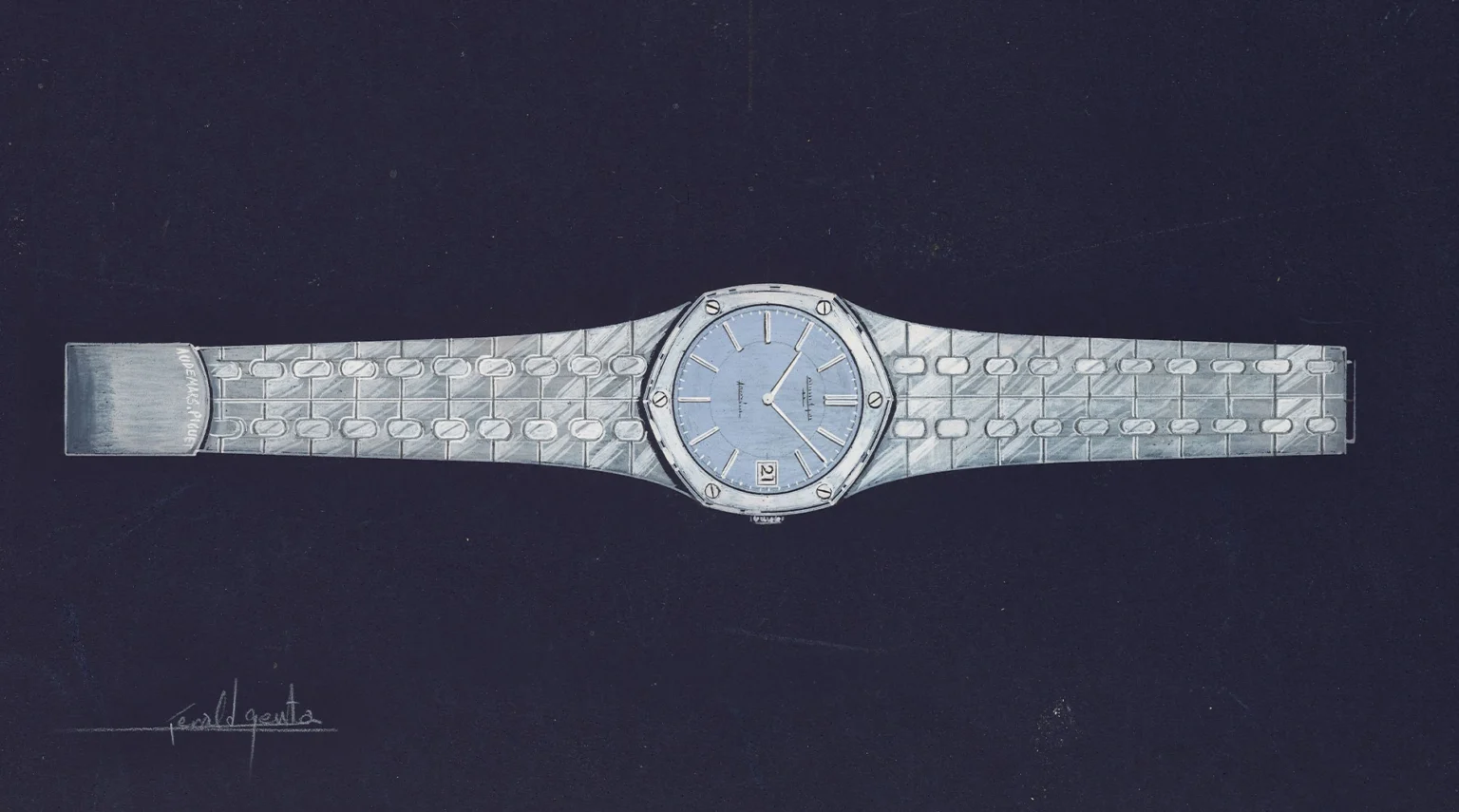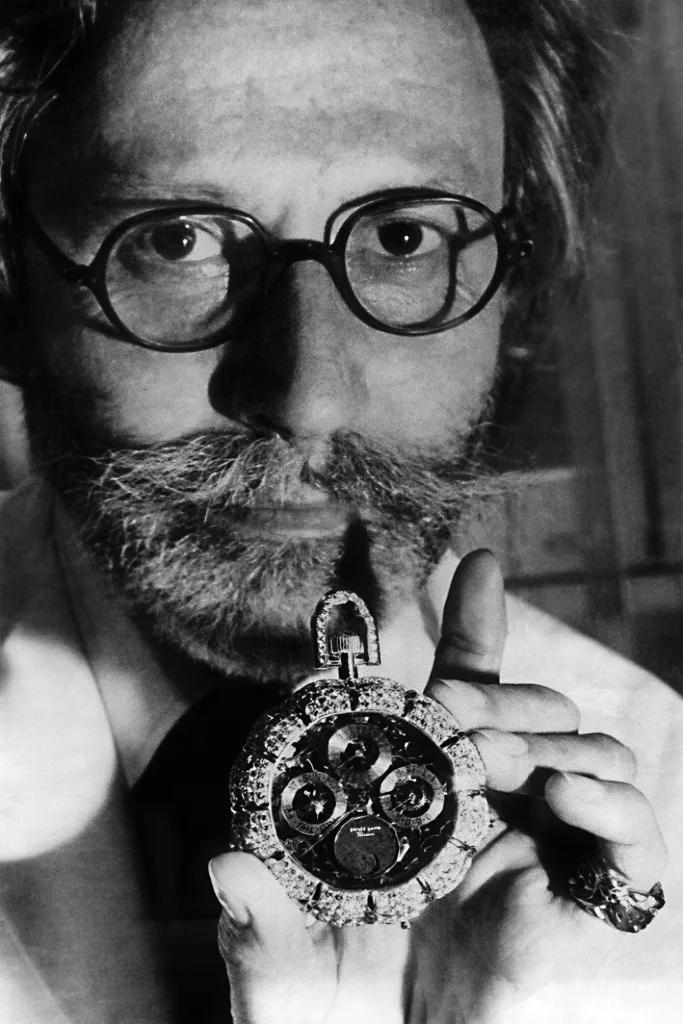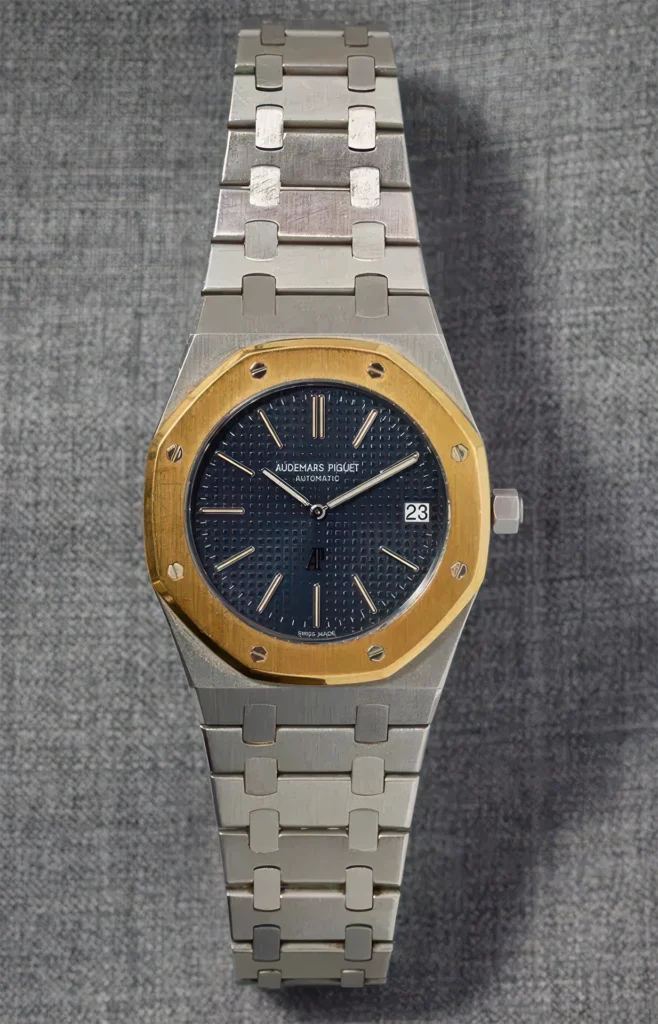
The line Royal Oak by Audemars Piguet is undoubtedly one of the icons of fine watchmaking. In fact, it is one of the most famous watches of all time, with an almost legendary reputation. In what follows, we take a detailed look at all the circumstances that led to the creation of the Royal Oak: from the first idea in 1970 to the official launch on 15 April 1972.
In the early 1970s, the Western luxury watch market, dominated by Rolex, was threatened by the arrival of Japanese quartz. Swiss manufacturers had to take drastic measures to revive the sector and avoid the risk of being left behind. At the time, Audemars Piguet was a brand rather curator which produces traditional gold watches renowned more for the quality of their movements than for their design.

The directors of Audemars Piguet quickly realised that they had to do something to shake up the market and reverse the trend at such a complex time for the watchmaking industry. They needed a new concepta revolutionary idea A watch with an unusual design, both sporty and elegant, to be worn in all circumstances.
The head of Audemars Piguet therefore decided to turn to a designer with a long history behind him, an iconic and unconventional professional: Gérald Genta. At the time, Genta was already well known in the industry for having designed Universal Geneve's Polerouter, Omega's Constellation and Patek Philippe's Golden Elipse. Legend has it that Genta designed the Royal Oak in a single night: this first project with AP (Audemars Piguet) was to become the masterpiece of its career and one of the icons of watchmaking history. The result is a steel watch, rather slim (only 7 mm) and rather large for its time (39 mm), with a single dial decorated in blue.
Le engineering of the new Royal Oak lies entirely in the mind of its designer, Gérald Genta, and consists of his own vision of the watch. The Royal Oak breaks with agreements of the time: it has a case integrated into an articulated bracelet containing a movement, itself sealed, an octagonal bezel and 8 screws. At a time when the cult of elegance dictated that technical elements had to be hidden as much as possible, Genta has cleverly decided to show them and make them visible. At first, these choices were not immediately appreciated by watchmaking experts, who even cried scandal. Of course, most of these people changed their minds a few years later and even began to give the Royal Oak a cultural value.
As is often the case in the history of art, the Royal Oak was not an immediate success. The first prototypes were made in white gold rather than steel, due to certain logistical and technological difficulties. Obviously, with such a high level of finishing, the price sales of the a increased dramatically to around 3,000 $; it was not until years later that the first models could be sold for around 1,000 $. In the years that followed, it was its variants that made the Royal Oak an icon of luxury sports watches. The Royal Oak has evolved over time and has been worn by hundreds of famous people: from musicians to actors, from sportsmen to entrepreneurs.

For collectors and experts in the field, even those who severely criticised the new AP line in its early days, the 1972 original has become Gérald Genta's true masterpiece. This timepiece did not succeed in saving Swiss companies from the advent of the Japanese models of the 1970s, as AP's management had hoped, but it did save the company from the Japanese models of the 1970s. had a lasting impact on the watchmaking industry. With the arrival of the Royal Oak on the market, the watchmaking industry itself was no longer what it once was, and everything came to a head in terms of watch design, engineering and production.

The first Royal Oak watches from 1972 have become highly sought-after pieces that reappear from time to time and are sold at auction for very high sums before disappearing again and entering private collections. All because the models in question are a veritable page of the history of contemporary watchmakingIn other words, they can be defined as the very essence and embodiment of those who conceived them.
But if we're talking about Gérald Genta's personal Royal Oakthe question changes completely. Ten years after his death, Evelyn Genta, his widow, decided to put up for sale not only some of her husband's watches, but also her own Royal Oak. Gérald Genta's personal Royal Oak is therefore a unique piece a inestimable valuein particular because he himself has personalised as you wish. This is precisely why Gérald Genta's Royal Oak by Audemars Piguet can be described as the Picasso of watchesBecause, objectively, it's much more than just a collector's item.
Apparently there were eight bidders: four on the phone, three online and one in the room. The bidding reached two million euros in just over six minutes, well over four times its original estimate. Produced around 1978, this Royal Oak special ref. 5403 The steel "Jumbo" is the only one in the world with a yellow gold bezel, added later by Gérald Genta himself.

In total, Genta's personal pieces have reached more than four million euros at auction. As you can read on the official Audemars Piguet website, part of this sum will be reused by the association. Gérald Genta Heritage to launch the first edition of the Gérald Genta Prize for young design talent.